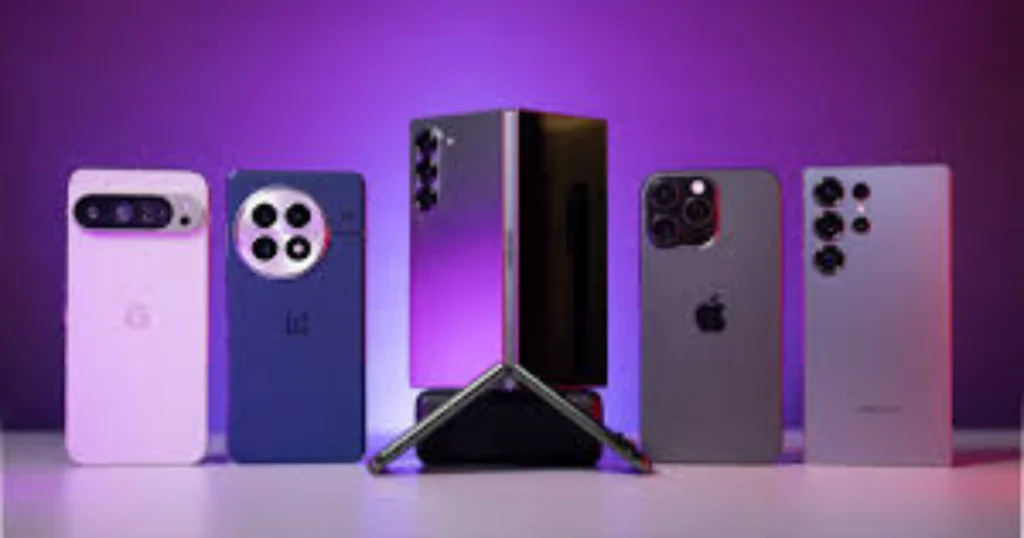OLED vs LED TVs: What’s the Difference?
Choosing between OLED vs LED TVs is a big decision. Both offer great viewing experiences but differ in technology, picture quality, design, and price. Knowing these differences helps you pick the perfect TV for your needs and budget.
What Are OLED and LED TVs?
To understand the OLED vs LED TVs debate, first, know what these terms mean. LED TVs use an LCD panel lit from behind by LEDs. This backlight shines through the screen to create images.
OLED TVs, on the other hand, use organic compounds that light up when an electric current passes through them. Each pixel lights up individually and can turn off completely. This difference in light production affects picture quality and performance.
Picture Quality: OLED vs LED TVs
Picture quality is a big difference between OLED vs LED TVs. OLED TVs have better contrast because each pixel can be turned on or off. This means OLED screens can show perfect blacks, making images more lifelike.
LED TVs use a backlight that lights up the whole screen or parts of it. Even with local dimming, LEDs can’t turn off pixels completely. This causes “light bleed,” making blacks appear grayish and reducing contrast.
OLED TVs also show more vibrant and natural colors. They keep colors consistent even when viewed from the side. LED TVs can have color fading or distortion when viewed from the side, affecting the viewing experience in rooms with multiple seating positions.
Design and Thickness Differences
OLED panels are ultra-thin and lightweight because they don’t need a separate backlight. This allows for sleek, modern TVs that can fit almost anywhere and even bend or curve in some models.
LED TVs are thicker because of the backlighting components behind the LCD panel. While many LED TVs are slim, especially with edge-lit designs, they can’t match OLED’s thin profile.
If you prefer a minimalist design or want to mount your TV flush against a wall, OLED offers more flexibility and style options.
Viewing Angles and Motion Performance
The viewing experience is different between OLED vs LED TVs. OLED TVs keep brightness and color consistent even at sharp angles. This makes OLED ideal for large rooms or wide seating arrangements.
LED TVs often show reduced brightness and color shifts at off-center angles. This can be frustrating when watching TV with a group, as side viewers may see a washed-out image.
For fast-paced action like sports or gaming, OLED TVs perform better. They reduce motion blur and provide smoother transitions during rapid movements. LED TVs generally have slower response times, causing noticeable blur in fast scenes.
Burn-In Concerns: OLED vs LED TVs
Burn-in risk is a common topic in the OLED vs LED TVs discussion. OLED screens can suffer from burn-in, where static images left on the screen for a long time cause permanent discoloration. This risk is especially relevant for users who display static elements like channel logos, game HUDs, or news tickers for hours daily.
However, modern OLED TVs include features like pixel shifting and screen savers to minimize burn-in risk. For most users, burn-in is rare and avoidable with normal use.
LED TVs, by contrast, do not have any burn-in risk. This makes them safer for displaying static content. This can be an advantage if you use your TV for gaming or digital signage where static elements remain on-screen frequently.
Energy Efficiency and Brightness
When comparing OLED vs LED TVs, energy use and brightness are key. OLED TVs use less power since pixels only light up when needed. But, they don’t get as bright as some LED TVs, which can be a problem in very bright rooms.
LED TVs, especially those with advanced dimming and high brightness, work better in bright rooms. If you watch TV in a sunlit room, an LED TV might be clearer.
Price and Availability
Price is a big factor when choosing between OLED vs LED TVs. OLED TVs are pricier due to their advanced tech and complex manufacturing. They’re seen as premium products and cost more.
LED TVs, however, have a wide price range, from budget to high-end. This makes them more affordable for many buyers. If you want a big screen or multiple TVs without spending a lot, LED is a better choice.
Which TV Should You Choose: OLED or LED?
Choosing between OLED vs LED TVs depends on what you value most and your budget. If you want the best picture quality, OLED TVs are the best. They’re great for movie lovers, gamers, and anyone wanting a top-notch home theater.
But, if you’re looking for a more affordable TV for everyday use, bright rooms, or static content, LED TVs are a good option. They’re reliable, come in many sizes, and don’t have burn-in issues.
Conclusion
Knowing the differences between OLED vs LED TVs helps you make a smart choice. OLED tech offers better picture quality, design, and motion handling but costs more and has some burn-in risk. LED TVs provide good performance at a lower price and better brightness for bright rooms, making them practical for most users.
Whether you pick OLED or LED, understanding what each offers lets you enjoy your favorite content with the best picture for your budget and needs.


